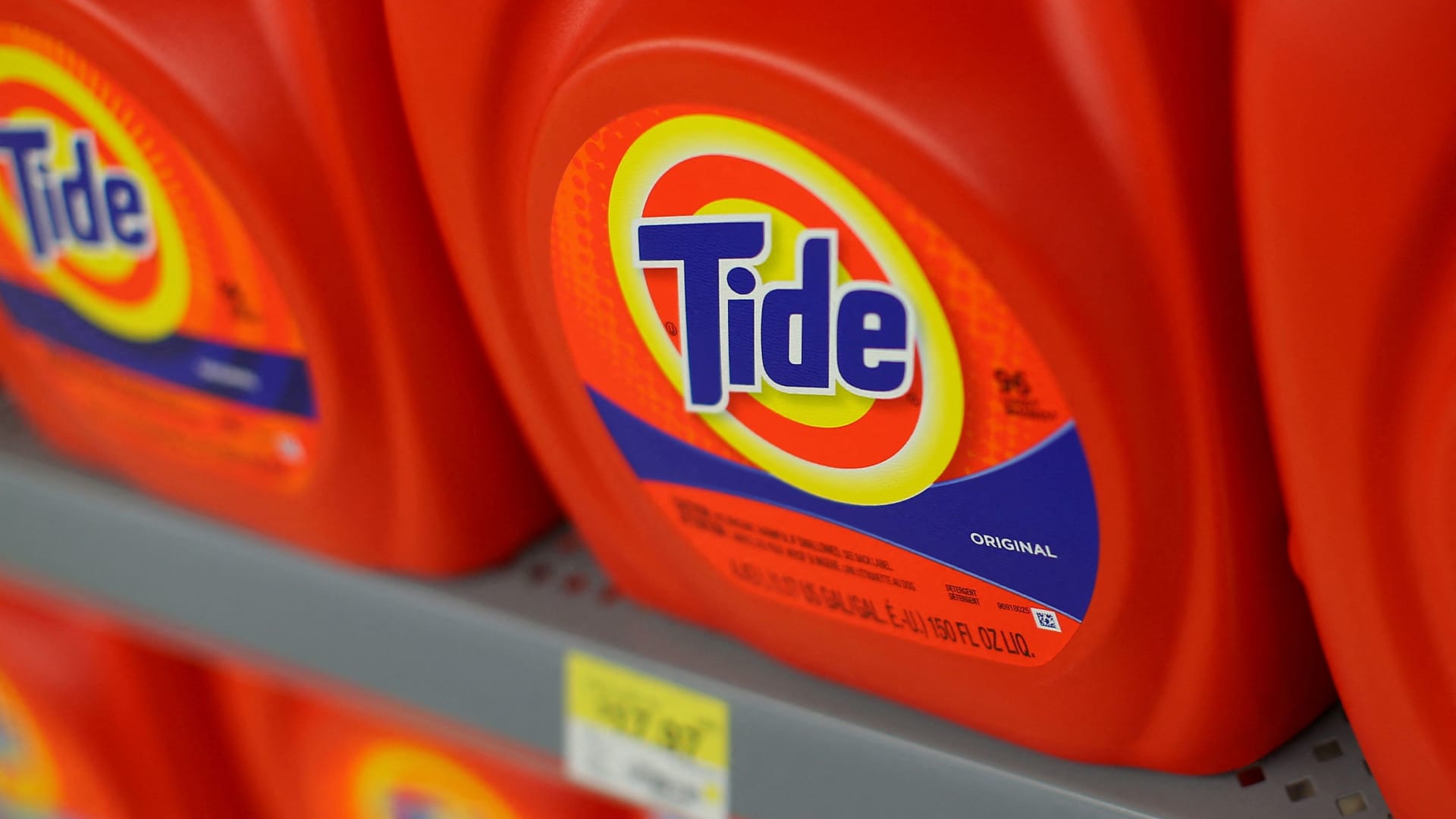Procter & Gamble on Friday reported quarterly earnings and revenue that beat analysts’ expectations, thanks to price hikes for products like Crest toothpaste and Pampers diapers.
But the company released a gloomy outlook for its fiscal 2024 sales that fell short of Wall Street’s estimates.
Still, shares of P&G rose more than 2%.
Here’s what the company reported compared with what Wall Street was expecting, based on a survey of analysts by Refinitiv:
- Earnings per share: $1.37 vs. $1.32 expected
- Revenue: $20.55 billion vs. $19.98 billion expected
The Tide detergent owner reported fiscal fourth-quarter net income of $3.38 billion, or $1.37 per share, up from $3.05 billion, or $1.21 per share, a year earlier.
Net sales rose 5% to $20.55 billion. Its organic revenue, which strips out the impact of foreign currency, acquisitions and divestitures, increased 8% in the quarter.
For fiscal 2024, P&G is forecasting that its revenue will grow 3% to 4%, lower than Wall Street’s expectations of 4.5% sales growth. The company is also projecting earnings per share growth of 6% to 9%, which is on the lower end of analysts’ forecast of 8.8%.
“We will undoubtedly experience more volatility in the fiscal year ahead, and while supply chains and input costs have become more stable as we enter fiscal 2024, the challenges we face are multi-faceted,” CFO Andre Schulten said on the company’s conference call.
But one bright spot is a $400 million after-tax benefit from favorable commodity costs, even including currency tail winds.
For roughly two years, P&G has been raising prices on its products to mitigate higher commodity costs. Yet customers haven’t been as willing to stick with P&G’s brands, leading to five consecutive quarters of volume declines. Volume excludes the impact of currency and pricing changes to reflect demand.
P&G’s volume fell 1% during the quarter. In fiscal 2024, P&G expects its volume will start increasing again, and prices will only rise 1% to 1.5%.
In the United States, P&G’s largest market, consumers traded down to cheaper private-label products. But the market’s volume actually grew 3% in the quarter. Demand was weaker in Europe and Asia Pacific.
The company’s health-care segment reported the largest drop in global volume at 3%. The division, which includes Oral-B and Pepto-Bismol, scared off North American customers with its higher prices, according to P&G. Europe and Asia-Pacific also saw market contractions.
P&G’s fabric and home-care business, which includes Tide and Febreze, saw its volume fall 2%. The company said customers in China were buying fewer fabric-care products, like Downy detergent.
The company’s grooming segment, which includes Gillette and Venus razors, reported its volume shrank 1% in the quarter.
P&G’s baby, feminine and family care and beauty segments reported flat volume for the quarter.
